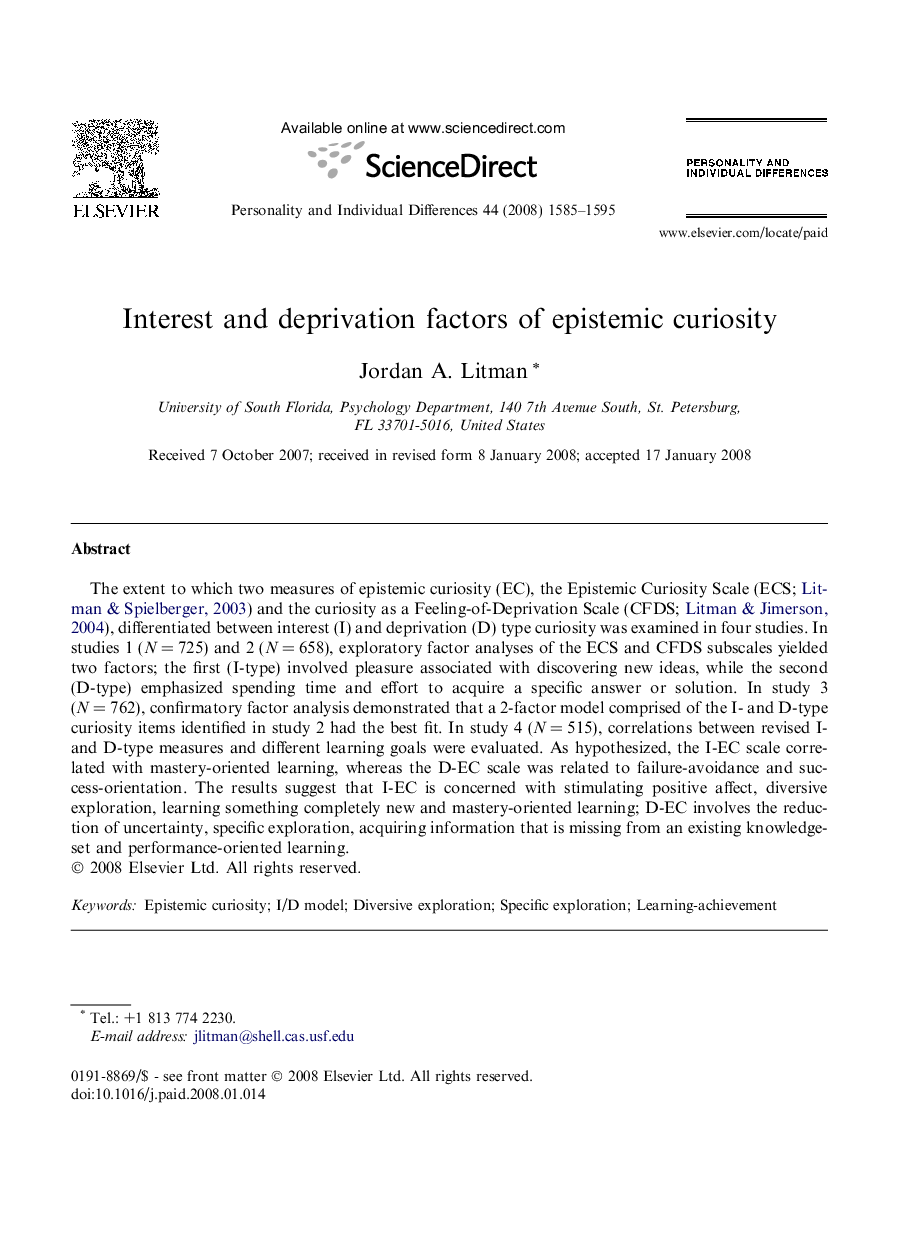| Article ID | Journal | Published Year | Pages | File Type |
|---|---|---|---|---|
| 892641 | Personality and Individual Differences | 2008 | 11 Pages |
The extent to which two measures of epistemic curiosity (EC), the Epistemic Curiosity Scale (ECS; Litman & Spielberger, 2003) and the curiosity as a Feeling-of-Deprivation Scale (CFDS; Litman & Jimerson, 2004), differentiated between interest (I) and deprivation (D) type curiosity was examined in four studies. In studies 1 (N = 725) and 2 (N = 658), exploratory factor analyses of the ECS and CFDS subscales yielded two factors; the first (I-type) involved pleasure associated with discovering new ideas, while the second (D-type) emphasized spending time and effort to acquire a specific answer or solution. In study 3 (N = 762), confirmatory factor analysis demonstrated that a 2-factor model comprised of the I- and D-type curiosity items identified in study 2 had the best fit. In study 4 (N = 515), correlations between revised I- and D-type measures and different learning goals were evaluated. As hypothesized, the I-EC scale correlated with mastery-oriented learning, whereas the D-EC scale was related to failure-avoidance and success-orientation. The results suggest that I-EC is concerned with stimulating positive affect, diversive exploration, learning something completely new and mastery-oriented learning; D-EC involves the reduction of uncertainty, specific exploration, acquiring information that is missing from an existing knowledge-set and performance-oriented learning.
